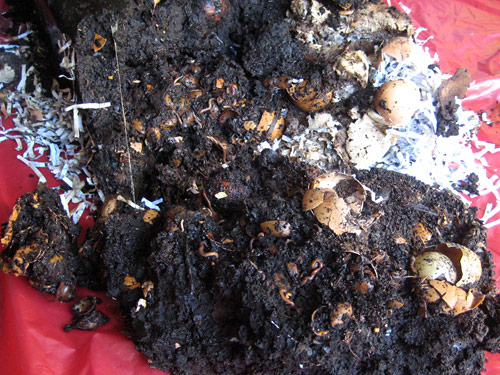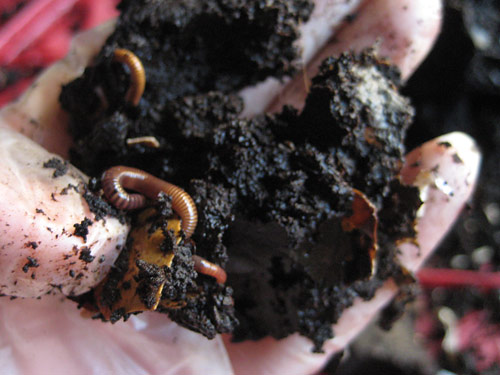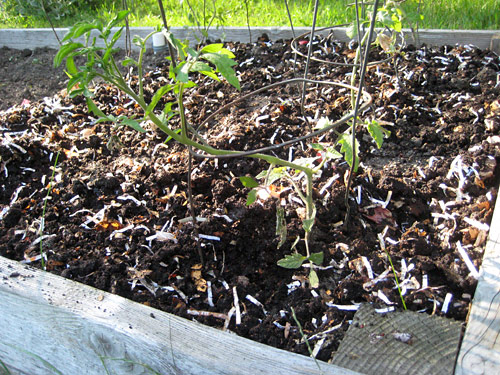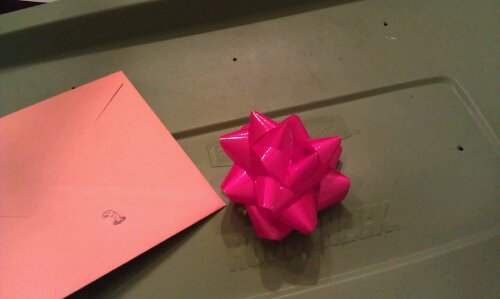As I mentioned back in January, my Other Half finished the construction of a worm bin for us. Vermicomposting, or composting utilizing worms to break down food wastes, creates a rich organic fertilizer for use in the garden. I’ve been wanting to try this for awhile because 1) we do not like tromping out into the snow and cold to the compost bin in the winter, and 2) it’s so freakin’ cool! I mean, these little guys eat most of your garbage and give you awesome fertilizer in exchange.
The Book
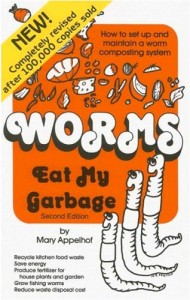 There are numerous articles online that give instructions on how to vermicompost, from creating the bin to what to feed the worms. However, Worms Eat My Garbage by Mary Appelhof is considered one of the best books on the subject. When we were ready to go pick up the worms from Flowerfield Enterprises, I chatted at length at the shop with Nancy about if I had correctly set up everything. She was great and happily answered my 21 questions on the subject.
There are numerous articles online that give instructions on how to vermicompost, from creating the bin to what to feed the worms. However, Worms Eat My Garbage by Mary Appelhof is considered one of the best books on the subject. When we were ready to go pick up the worms from Flowerfield Enterprises, I chatted at length at the shop with Nancy about if I had correctly set up everything. She was great and happily answered my 21 questions on the subject.
The Bin
To begin with, we decided to go with a 13 gallon plastic storage container to use as the bin. Plastic does not rot like wood, and keeps the contents of the bin neatly contained with an easy snap on-and-off lid. We chose an opaque container so light would never distress the worms whose skin has photo-sensitive cells. Holes (not too large) were drilled into the lid, around the top rim of the bin, and into the bottom of the bin. This provides air and drainage if needed. The bin was placed up on some bricks with a pan beneath it to catch excess liquid if it is ever present.

The Bedding
We chose to go with shredded paper for bedding. My gardening friend Mrs. R. got us started with a few bags full, and we have a steady supply now because of our home offices. The paper is dampened, not drenched, with water when placed in the bin. Along with food scraps, the worms also eat the paper. I was advised each time when food scraps are added, I should also add a handful or two of dry shredded paper. The moisture from the food will dampen the newly added paper. Some people spritz newly added paper with a water bottle, but we have yet had the need to do so with our bin.
Meet Jim!
Isn’t he great?! Much to many people’s surprise, Jim is not composed of nightcrawlers. He is a team of red worms (Eisenia fetida). Our common nightcrawler (Lumbricus terrestris) burrows quite deep and works much more slowly. Red worms hang out more closely to the surface with other types of microbes to break down waste. They work and reproduce fairly fast. For this size of bin, we started out with a pound of the red worms.
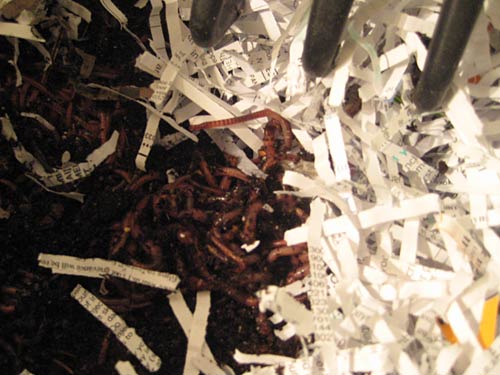
The Food
Nom, nom, nom! Below is Jim munching away on a banana peel and some spinach scraps. A handful of soil from our outside compost bin was introduced into the worm bin at the beginning so other beneficial microbes could help break down the food and make it easier for the worms to digest. The food we give Jim is mostly produce scraps. He loves our banana peels and apple cores. You can also feed composting worms bread and rinsed eggshells. In fact, Mrs. R. has said her worms like to use eggshells as nurseries for their young. We do not feed Jim bones, meat, or fats. Because of this, worm bins do not smell.
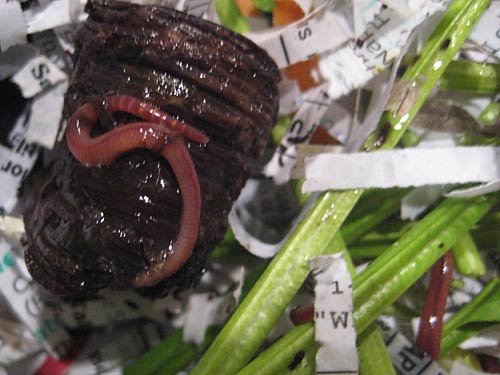
It Begins Indeed
So, as with many things in this gardening journal, I am not claiming to be expert. I’m simply going to keep tabs on how we go about All-Things-Gardening on the Lot, what we screw up, and what we do better next time. Wish Jim and us luck!
